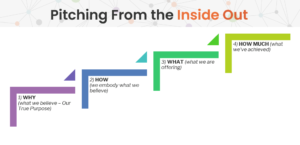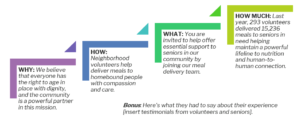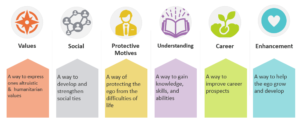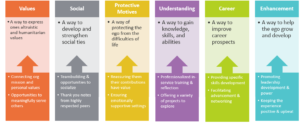3 Simple Strategies to Reduce Your Nonprofit’s Volunteer Turnover
Are you wondering how to build a better volunteer onboarding and retention strategy that will reduce your volunteer turnover rate?
Well, you are not alone!
We just had over 1,400 volunteer leaders attend a training with us on this very topic.
Did you miss the opportunity to join us? No worries!
We are here for you with a recap of the top takeaways that will ensure your volunteers stay engaged and keep coming back.
Your Vision for the Future
Have you had a chance to really think about your vision for the future? COVID has thrown a wrench in volunteer engagement, and for good reason: we wanted to keep everybody safe.
But now we are starting to wake up again as vaccines are being deployed at lightning speed. We are starting to plan for their future.
So, now is the time for organizations to start thinking about the future and how volunteers can contribute to their goals.
Now is the time to start planning for a full return to full operations. If you wait until everybody else is fully open to start planning, you’re going to miss the boat. There will be a lot of people asking for volunteer support.
You don’t want your organization to get lost in the mix. So being to plan how you will gather your supporters now and get them excited about returning.
In this blog post, you will learn our three favorite frameworks to reduce your volunteer turnover rate that can be employed right now as you plan your big post-COVID re-boot!
How to Make a Compelling Case for Support
Leaders of volunteers have a superpower: the ability to bring community together.
That means you have the power to keep dedicated volunteers coming back. But to rebuild your team, you will need a solid volunteer strategy and an inspired vision that volunteers will want to follow.
You need to learn how to become the architects of experience for your organization and in your volunteer program.
One of the ways you can reduce volunteer turnover is to have a proven system, a step-by-step pathway of building and maintaining volunteer engagement at your organization.
Once you have the volunteer journey mapped out you can start to think about your volunteer appeal. Your compelling message of “why.” Why should people care about your organization?
First, you need to understand the key motivations behind the key motivations of your top volunteers or your most common volunteers. Read this blog post for more on that.
Then, you need to learn how to pitch from the inside out. You can’t simply build your volunteer roles, promote them by saying “hey, come on in and volunteer,” and “by the way, here are all the requirements you need to fulfill,” and “yes, this is all so you can come work for free with us!”
Simon Sinek calls this the golden circle. We follow people who believe the same things we believe, not for them, but for ourselves.
Highly successful leaders communicate from the inside out. Our gut decides, and our intellect justifies. It turns out that decision-making Is not as rationale as we originally thought. Instead, it originates from your limbic (or emotional) brain.
So, when making a pitch for volunteer support, it’s important to lead with YOUR BIG WHY, not statistics, or a list of volunteer requirements! Your appeal will touch the hearts of supporters only when they believe you share a world view for the future.
Here’s a step-by-step process for developing your pitch for volunteer support, starting with your big WHY.

After you conquer the why, then you need to talk about how your organization embodies what you believe, and what your organization offers to volunteers in terms of making a difference.
Wondering what this looks like in practice?
Here’s an example based on the why, how, what, and how much for a senior service organization.

Once you develop a set of statements using this framework, you can use them as the basis for your volunteer recruitment postings for new volunteers and welcome back emails for existing volunteers who may have taken a pause during COVID.
You can use this language on your website and even use it to reframe your volunteer position descriptions!
With this framework, both prospective and current volunteers can see if they are resonating with what your organization is doing. And, when they do, they will feel re-energized and ready to respond to your call to action. You can also add a little bonus to your calls to action: some volunteer and client testimonials.
Volunteer testimonials are one of the most powerful ways to tap into the psychological phenomenon of social proof. Research has shown that people will conform in order to be liked by, similar to, or accepted by the influencer (or society).
When testimonials are featured on a volunteer recruitment web page, they let the community, and people who may be considering a volunteer opportunity, know that your organization is worthy of support.
Further, when existing volunteers share information about their relationship with your program and what they have achieved, it also helps set expectations and inspire hope in newcomers.
Here are some questions to ask to get the ball rolling:
- Why is this cause important to you?
- What impact does your volunteer role have on the clients or community?
- How do you feel about your volunteer experience? What do you like most?
- What is it like to be a [insert volunteer role]? How has it changed you?
- What would you say to someone who might consider volunteering?
- Would you recommend this experience to others? Why?
When you combine your pitch from the inside out with the voice of real-life volunteers, you will have a powerful combination of marketing magic that meets your audience where they are at.
Improve the Volunteer Experience and Reduce
Volunteer Turnover
A second way to look at reducing volunteer turnover is to consider how your current volunteer experiences align with true volunteer motivations and, if they don’t, by making improvements.
Social scientists have researched functional theories about the reasons, purposes, and motivations underlying human behavior. These may impact decisions about becoming a volunteer in the first place and decisions about continuing to volunteer.
They have been examining these motivations for volunteering, and how that might translate to a better volunteer user experience.
In 1998, Gil Clary and Mark Snyder determined that there are six key motivations that influence people to volunteer:

This research has been replicated around the world with all kinds of volunteers and contexts, and the results are always the same.
Note: Interested in more about what motivates volunteers? Check out our blogs, (here and here), According to the research, below are the six key motivations:
- Values: this is the number one reason everyone says they volunteer. Why? It’s because it’s the most socially acceptable reason.
- Social: to develop and strengthen social ties, not only with fellow volunteers, but also other loved ones in your life who value volunteerism.
- Protective Motives: to protect the ego from the difficulties of life. For example, people who return to volunteer in hospice after a family member passes away as a way of processing their grief.
- Understanding: to gain knowledge, skills, and abilities. For example, Tobi is a master gardener, and she receives training and learns new gardening techniques through her volunteer work.
- Career: to improve career prospects. This is the number one reason for young people to volunteer. They are looking to add experience to their resume.
- Enhancement: to enhance the ego. These are the volunteers who seek out leadership positions, like board members or advisory councils.
These research motivations change over time, but most volunteer teams have two to three top research-based motivations. In order to figure out what they are for your team, develop a volunteer survey based on the questions in the Gil Clary and Mark Snyder study.
When you know what motivates your volunteers you can apply your knowledge to your management practices. Here’s a way to apply it to volunteer appreciation:

For example, if you find that volunteers are attracted to your organization because they connect with the mission, you should be using a values-based approach to connect with the outside world and bring in and mobilize volunteers.
If you find your volunteer team is motivated by social factors, then you absolutely want to tap that social aspect of volunteering.
Want to learn more? Check out our recent blog on appreciating volunteers at every step of the life cycle.
Create an Onboarding Experience That Reduces Volunteer Turnover
A third way to ensure volunteer keep coming back is to set a plan in place to ensure their first impressions are exceptional.
Onboarding is one of the most fragile times in a volunteer’s experience with you. Whether you are re-onboarding current volunteers or welcoming new volunteers, you want to ensure that every step of the way is seamless, enjoyable, and filled with hope and excitement for the future.
Now is not the time to leave your onboarding to chance!
You want to make sure that your organization feels like skating on frictionless ice. This doesn’t mean you let go of all your requirements, but think of ways you can make it as efficient and friendly as possible.
If you make it difficult for people to complete the requirements to volunteer, they are more likely to quit because they wonder how hard it’s going to be to volunteer if they have to overcome so many challenges just to apply.
So, how can you set the stage?
Here are some ways to reduce early volunteer turnover. Here are two ways:
Be more efficient: Think about how volunteers and coworkers can assist you. Ask them to assist you during the onboarding process so that it’s not all on you! If you are a bottleneck, chances are the process won’t be working as efficiently is it could be. In fact, forming a Volunteer Welcome Team is the perfect way to help volunteers instantly bond with peers and get comfortable by getting to know a few people early on.
They will also feel less like a number, and more like the valuable supporter they are.
Improve the volunteer journey: Map out your touchpoints and list the different ways volunteers are interacting with your organization. Map out everything, including in-person, online, and over-the-phone interactions. Then, brainstorm the emotional and informational needs at each touchpoint.
Remember these needs change over time; they evolve.
For example, someone browsing your webpage has different emotional and informational needs than someone completing an application. When someone is browsing your webpage they are looking for people like them. They are wondering if your organization will make the best use of their time. They are wondering if it’s a safe place and that they’ll feel welcomed.
When someone is filling out an application, they want to know what the next step is. They want to know how long they are going to need to wait until they hear back from you, until they can get started with volunteering.
You get the drift. At every step, there are evolving needs. So, why develop a process that doesn’t take this into account?
At every step of their lifecycle, volunteers go through a process of transformation, and we hope it’s for the better. The more joy they find in their own development and the impact they make in the world, the more likely they are to continue their active support.
It’s up to you as their leader to make sure you are meeting each of their needs at the appropriate time. Overcoming Volunteer Turnover
Volunteerism is a two-way street. Volunteers give you some of their valuable time in return for satisfying a variety of functional motives. When it isn’t clear that these motivations will be met, volunteers will be much less likely to return, or even start, service.
According to our volunteer management progress report survey, 77.3% of volunteer managers saw a decrease in the diversity of volunteer roles and the average monthly volunteer hours in 2020, so we really did experience a downturn in volunteerism.
Right before the pandemic, we were experiencing phenomenal rises in volunteerism around the world, and we can’t lose that momentum!
So, we need to focus on bringing people back to volunteerism. We don’t want to lose momentum now that our communities are starting to open up again.
You didn’t come this far only to come this far, but there’s still more to do.
So, consider what you can do to meet volunteers where they’re at, to create compelling messages, and design experiences that make your organization THE PLACE to contribute a pair of helping hands and an open heart.








Leave A Comment